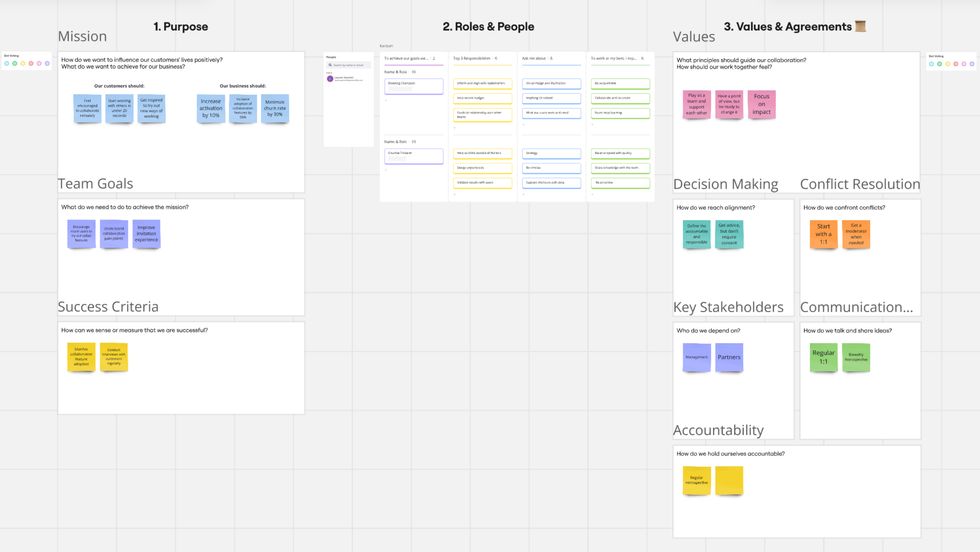Is it true that too many chefs spoil the broth? A shift to a lean-and-clean workforce and increased focus on high-performing teams can help you avoid that at your business.
This probably won’t be the first time you’ve heard “quality over quantity”, and hey, it’s good business advice! It doesn’t make sense to hire 20 people to get a job done if five highly skilled experts can do the same thing, right? When you intentionally work with lean teams that are focused on performance, you save time, energy, and even capital. Yes, experts also warrant higher pay, but also factor in all the money and time you’ll save by not having to train someone who isn’t performing, or paying full-time salaries for excessive team members. (Note: this is not anti-upskilling! No matter how skilled your team is, they’ll probably require training at some point)
So, if increasing profitability and productivity is on your to-do list for 2025, one of the best ways to do it is by building high-performing teams. This blog will be your step-by-step guide, complete with examples, on how to DIY your dream team.
Check out our virtual fireside chat on cultivating and building high-performing lean teams below.
What does a high-performing team look like?
A high-performing team is a group of professionals with their own diverse perspectives and talents, coming together to seamlessly collaborate and progress towards a focused goal. Remember, the end result of their individual tasks as well as those of the group defines success. High-performance teams work on well-defined goals, metrics, and smooth communication.
The focus is on driving tangible results here in a pre-planned and efficient manner. Naturally, it makes perfect sense for a business to work with a few immensely skilled people. Doesn’t every business want that? Sure, but, where do you find these people? The answer is right under your nose!
High-performance teams aren’t always built from scratch, you can absolutely nurture your current team.
Read this next: Maximize your workforce with high-performing teams
This blog is here to show you that building high-performing teams only takes five easy steps:
Step 1: Build a team charter

First things first! Get the whole crew together and build a nice stable foundation aka a team charter.
Even if you’re all in-office, you’ll probably need a virtual workspace or hub to bring all the stakeholders together. Everybody on the same page results in greater transparency, and getting all the nitty-gritty sorted means your crew can collaborate, plan, and get work done without too much hassle. This allows the high performers to truly focus on, well, their performance!
Here’s how to create a team charter:
- Download a digital collaboration tool. We recommend using Miro for its ease of use and unmatched functionality. Miro also provides multiple readymade as well as customizable charter templates that you can pick from.
- Once you have picked a template or settled on a structure, start by customizing it to suit your business needs. This is where you will add your team members and assign them goals and roles. For example, Miro also comes with the Org Chart widget to create diagrams for workflows and reporting hierarchy.
- Go one step deeper: you can use this workspace to get to go into extreme detail, such as deliverables per person, deadlines, handovers, pending resolutions, etc.
- Before you float the team charter out, make sure it has been reviewed by the management, the HR, and the team leads. Also, these reviews need to happen every few months to adjust to your evolving priority list.
Step 2: Decide on the rules
Now that you have created a system/charter to collaborate, communicate, and designate, you need a bunch of basic guidelines and a SOP for everyone to follow.
Team norms, as they can also be called, help remove any room for error in the process and make it easier for your high-performing team to focus on the actual job.
Before you implement these rules, here’s what you can do to make sure everyone’s onboard with them.
- Decide on these team norms collaboratively. Involve all key stakeholders in the process.
- Do not ignore the basics. Something as simple as “Don’t be afraid to share your ideas with the group” can be reassuring for your employees and encourage collaboration.
- For everyone to follow these rules, the team leads have to lead the way. When a guiding principle isn’t respected by a leader, it won’t last long. If you want your team to lead with empathy and honesty, it has to start with their manager creating a space for open dialogue and constructive feedback, not just for the team but for themselves as well.
- We know, giving feedback can get…awkward. Setting guidelines and even templates on how to deliver constructive criticism or opinions can help reduce friction. You can even use anonymous feedback tools such as Officevibe or a simple Google form to collect feedback without anyone feeling uncomfortable.
- Organize a team workshop to discuss psychological safety (the shared belief that it’s okay to take risks and disagree openly) and its importance. The goal of establishing these guidelines is to foster an environment of inclusivity, growth, and safety. Offices can very quickly become grounds for power play, politics, and discontentment, so when we define our values and principles clearly and hold everyone accountable to them, we say NO to drama.
Read this next: How to create psychological safety at work
Step 3: Conduct a skills inventory
A high-performing team runs on skills. Want to build a team that has the right knowledge, tools, and skills for the job? First, we find the skills they already have and then identify the skills they need to have for the job they currently have or the one you want to grow them into.
PowerToFly’s intuitive personal skills audit tool SkillMeter is a quick, easy to use, and heavily personalized way for you to understand every aspect of your team’s capabilities and potential. Hard skills, soft skills, and technical skills — it's a rundown of everything!
Start by getting your team to fill it out, and once you’ve identified the skill gaps, you can bridge those gaps with the right courses, online learning tools, and the resources your employees need to remain at the top of their game.
We recommend doing a skills inventory semi-annually because, let’s face it, the world is changing too fast. Building high-performance teams is not a one-time job, it’s a constant work in progress.
Read this next: How to conduct a skills inventory on your team for growth
Step 4: Use structured collaboration tools
Now that you’ve established the rules, set up your virtual hub, identified the skill set(s) you need and taken a step in the direction of upskilling your workforce…what next?
The work, of course!
High-performance teams are made up of high performers, but specifically independent, intelligent self-starters who are passionate about bringing visible results. Be careful, it’s super easy to mistake this independence for ‘working in silos.’ High-performance teams work well because there’s immense teamwork pulling them to greater results.
To encourage this, the business needs to establish clear channels for communication and collaboration.
For collabs, platforms like ClickUp, Notion, or Trello can help all the team members ideate, update, and review the progress all in one place. You need this setup for saving time and confusion. Another good way to avoid miscommunication and work more efficiently is to set up dedicated weekly meetings for all team members to catch up on the project status. (Also, these meetings can serve as a great bonding exercise to help the team feel connected.)
Seamless, smooth communication takes some streamlining. We know all the basic software we need for that — Zoom, Slack, and Teams, to name a few — but you can make your workflow smoother if we integrate all the tools we need into one handy dashboard. This is where choosing the right software becomes important.
This is also where training becomes even more important, because even with the right tools and existing digital literacy, there can be a learning curve. Do not underestimate that gap! Regular tech seminars/talks or training sessions with the IT team can help your high-performance teams get the work done faster and easier.
Once you’re past the technical barrier, the focus can be on clear and frequent communication.
Read this next: Communication skills: Synonym for great info sharing
Step 5: Celebrate the team
Nothing kills motivation and morale like a lack of recognition. And it’s not just about the KPIs — if you’ve built a team of skilled and enterprising bunch of go-getters, make it a point to acknowledge their ongoing efforts, not just the straight wins.
Define clear milestones for your performers separately and for the team as a whole. These milestones should also be communicated along with the incentives and rewards that come with achieving them.
Certificates, trophies, gift cards, PTO, or sometimes even a newsletter or meeting shoutout celebrating that win can go a long way in making your team feel valued.
Watch this next: The role recognition plays in employee retention
Go forth and build a high-performance team
At the time of writing this article, it’s the start of a new year, which is a great time to give your business a new direction towards higher efficiency and performance. Start your journey towards building a high-performing team today with a simple question: How can I help my employees perform better?
That’s it! You’ve already taken the first step towards creating a high-performance business.
And of course, PowerToFly is here to be your partner at every step for all things talent management!📝 Free download: Guide to Inclusive Language
High-performing teams thrive in inclusive cultures. Looking for an overview on appropriate wording, sensitivity tips, and HR guidelines for inclusive language? Download our Guide to Inclusive Language below:





